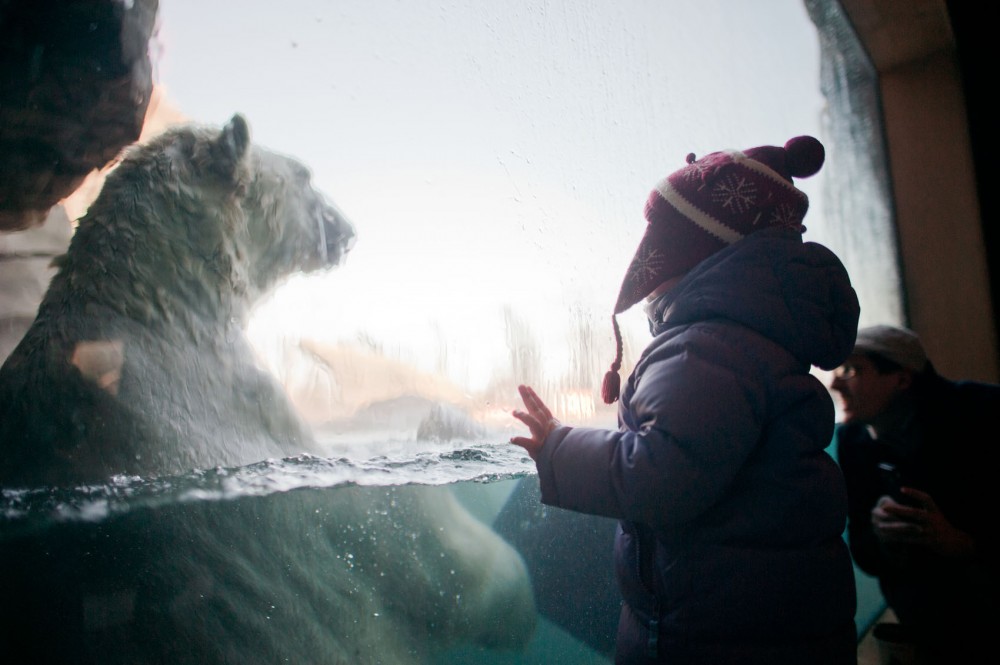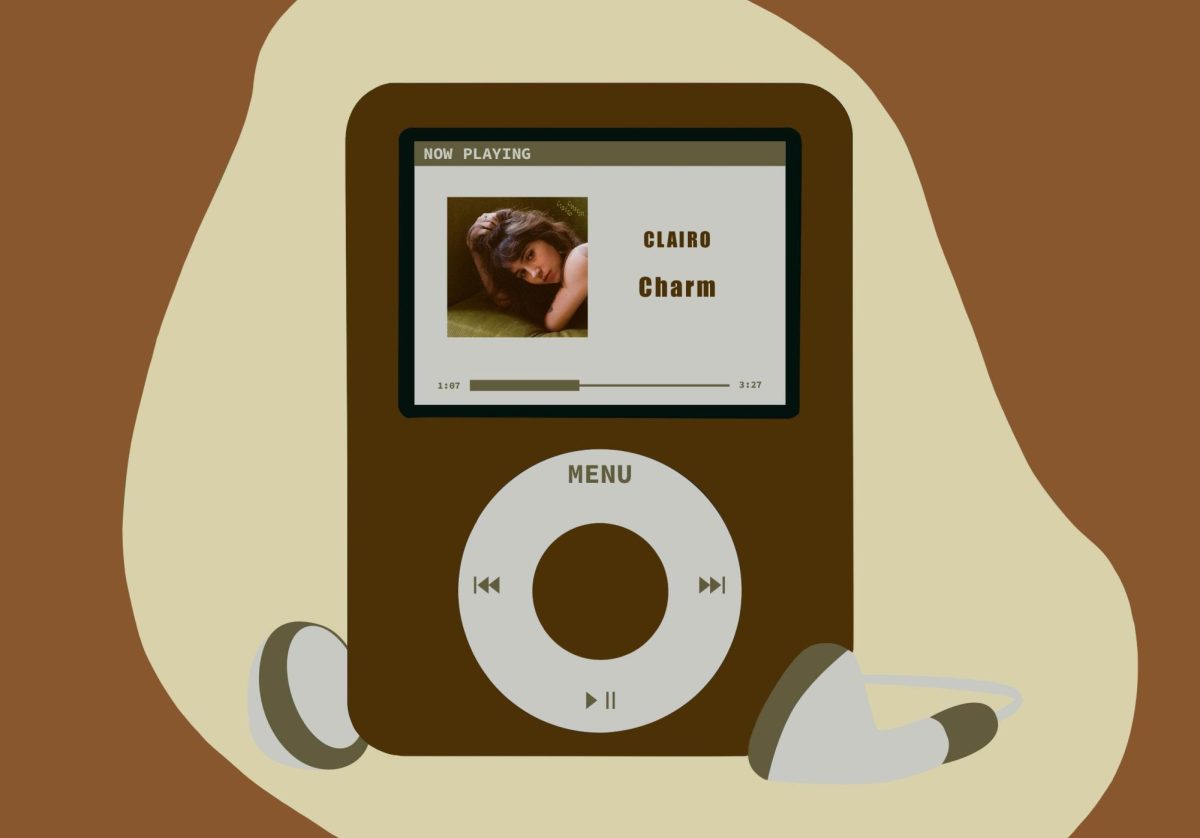What: “The Hidden World of Bears”
When: Now until April 2nd
Where: Como Park Zoo and Consevatory, 1225 Eastbrook Drive, Saint Paul, MN 55103
Cost: Free, $2 donation suggested
Polar Bears are the only land animals that actively hunt human beings for food. The occasional lion or tiger may go crazy and start stealing kids from villages, but polar bears constantly see people for what they really are: soft, clawless, dull-toothed and slow. Hell, some of us can’t even grow a good beard for them to choke on.
Watching a bear play around on a frigid February day, however, you’d think that the big clown would make a better pet than mortal enemy.
Como Park Zoo is a Twin Cities classic, situated just past the University’s St. Paul campus on Como Avenue. The midsize menagerie is free to the public — they suggest a $2 donation — yet remains an active center of animal research and analysis.
In 2010, the Como Zoo completely remade what had once been a very sad bear enclosure, expanding the environment and updating facilities for bear training and treatment. The new underwater observation window allows zoo-goers a head-on view of the massive animals’ performances.
“It’s amazing how [the polar bears’] natural behaviors manifest in this environment,” said senior keeper Allison Jungheim. “They’ll dive on barrels, trying to ‘drown them,’ rolling all around underwater.”
But for two brown bears and a grizzly on loan from the flooded Roosevelt Park Zoo in Minot, N.D., the water isn’t such a fun place.
“Kids gets really scared that the brown bears are drowning when they swim, it’s not very graceful,” Jungheim said.
Indeed, bears are one of the most misunderstood creatures in the world today. Legends of their enormous size and power have created a rather brutal public conception, and attacks on Snickers-wielding Boy Scouts troops cause national uproar.
However, bears follow as clear a logic as any other animal and can be decoded through careful research, says Doctor Lynn Rogers of the Wildlife Research Institute.
Rogers, a field researcher, has spent the last 45 years of his life living with and tracking black bears in northern Minnesota, and his groundbreaking work has earned him the moniker “the Jane Goodall of bears” from fellow scientists.
“My great goal is to replace misconceptions with facts when it comes to these animals,” said Doctor Rogers during a conversation with A&E. “People think that mother black bears will kill to protect their cubs — there hasn’t been a single recorded death from a mother defending young in the whole world. People think that black bears will defend their territory, but they instinctually climb trees when threatened. Bears are gentle foraging creatures.”
This overarching message is on display in the Como Zoo’s new exhibit “The Hidden World of Bears,” comprised of photographs from Rogers’ private collection. The beautiful snapshots show black bears going about their normal lives, which seem to consist primarily of eating and sleeping. Many show Rogers within feet of the shaggy animals, smiling for all the world like a professional photo-bomber.
“I used a technique called habituation to build trust between myself and the bears so that they eventually ignored me completely,” Rogers said.
“They don’t see me as a food source or a threat so they treat me like a part of the landscape.”
Rogers followed, counted and even slept near bears in the northwoods and so achieved an incredible insight into their lives. He realized that black bears’ primary defense of tree climbing was likely brought about by their ice-age evolutionary environment; with so many massive predators (sabre-tooth cats, grizzly bears, giant short-nose bears) around, black bears were forced to live like prey animals. This is one of the many reasons why they pose such a small threat to human beings.
That small threat is a good thing too, as bear and human populations began to interact more than ever.
“Until the 1960s, there was a bounty on every bear pelt in Minnesota, and until 1971, they were classified as varmints, to be hunted by any means possible,” Rogers said. “I worked with a number of hunters’ groups and the state Legislature to pass a bill classifying them as big-game animals in ’71.”
Suddenly, Rogers and company had reduced the hunting season from 52 weeks to six and established limits on size and number of bears killed. This led to a black bear population explosion just as humans started pushing denser settlement north, and contact between the species increased exponentially.
“Just another reason why learning about bears is crucial,” as Rogers put it.
Humans in even more northern realms, like Churchill, Alaska, are facing increased bear contact as well. But unlike their smaller black cousins, polar bears don’t climb trees when they see people.
The zoo’s half-ton behemoth starts bouncing on a plastic drum with his front paws, practicing the motions that he would use in the wild to break through snow crust into a seal’s den. Then he pushes the drum out into the water and waits for a second before launching himself onto the bobbing toy. You could swear that the bear’s long face was smiling as he rolled around in the 34-degree water, looking like a big dog.
Humans need to find a way to safely interact with bears across the U.S. and world so that we can keep both species safe and happy into the future. The Como Zoo is certainly doing its part to foster a good relationship between the two.

















